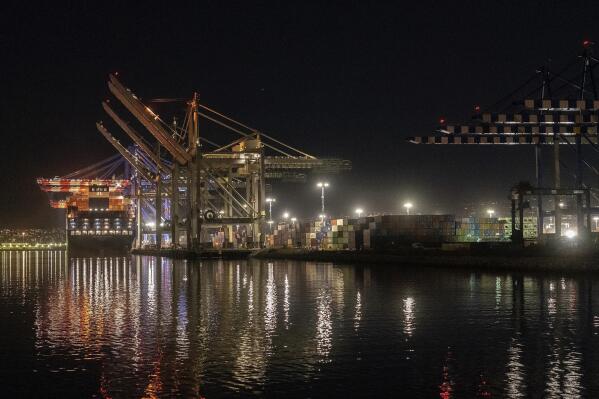Emergency personnel arrive at oil refinery after hydrogen sulfide leaked Thursday, Oct. 10, 2024 in Houston. (KTRK via AP)
October 11, 2024
DEER PARK, Texas (AP) — Two employees killed when hydrogen sulfide leaked at a Houston-area oil refinery were employees of a subcontractor performing maintenance work, the director of Pemex, Mexico’s state-owned oil company that operates the plant, said Friday.
The two “were in the zone directly affected, and who received the direct impact of the gas,” Pemex Director Victor Rodriguez said during a news briefing in Mexico City. Both bodies have been recovered.
Mexican Energy Secretary Luz Elena Gonzalez said “there is no longer any risk” as a result of the leak and that the cause of the leak is under investigation.
Pemex previously said in a statement that operations had been “proactively halted” at two units of the oil refinery with the aim of mitigating the impact.
Harris County Sheriff Ed Gonzalez said the two workers were killed and nearly three dozen others were either transported to hospitals or treated at the scene following the leak of hydrogen sulfide Thursday at the facility in Deer Park.
ADVERTISEMENT
No names have been released, and Gonzalez said the remains of the two dead workers were taken by the Harris County medical examiner.
RELATED STORIES

At least 2 killed and dozens injured after leak at a Texas oil refinery

Pipeline explodes in Houston suburb, forcing evacuations
Hydrogen sulfide is a foul-smelling gas that can be toxicat high levels. Gonzalez said that the gas release happened during work on a flange at the facility, which is part of a cluster of oil refineries and plants that makes Houston the nation’s petrochemical heartland.
City officials issued a shelter-in-place order but lifted it hours later after air monitoring showed no risk to the surrounding community, Deer Park Mayor Jerry Mouton said.
“Other than the smell, we have not had any verifiable air monitoring to support that anything got outside the facility,” Mouton said.
The leak caused the second shelter-in-place orders in Deer Park in the span of weeks. Last month, a pipeline fire that burned for four days forced surrounding neighborhoods to evacuate.
DEER PARK, Texas (AP) — Two employees killed when hydrogen sulfide leaked at a Houston-area oil refinery were employees of a subcontractor performing maintenance work, the director of Pemex, Mexico’s state-owned oil company that operates the plant, said Friday.
The two “were in the zone directly affected, and who received the direct impact of the gas,” Pemex Director Victor Rodriguez said during a news briefing in Mexico City. Both bodies have been recovered.
Mexican Energy Secretary Luz Elena Gonzalez said “there is no longer any risk” as a result of the leak and that the cause of the leak is under investigation.
Pemex previously said in a statement that operations had been “proactively halted” at two units of the oil refinery with the aim of mitigating the impact.
Harris County Sheriff Ed Gonzalez said the two workers were killed and nearly three dozen others were either transported to hospitals or treated at the scene following the leak of hydrogen sulfide Thursday at the facility in Deer Park.
ADVERTISEMENT
No names have been released, and Gonzalez said the remains of the two dead workers were taken by the Harris County medical examiner.
RELATED STORIES
At least 2 killed and dozens injured after leak at a Texas oil refinery
Pipeline explodes in Houston suburb, forcing evacuations
Hydrogen sulfide is a foul-smelling gas that can be toxic
City officials issued a shelter-in-place order but lifted it hours later after air monitoring showed no risk to the surrounding community, Deer Park Mayor Jerry Mouton said.
“Other than the smell, we have not had any verifiable air monitoring to support that anything got outside the facility,” Mouton said.
The leak caused the second shelter-in-place orders in Deer Park in the span of weeks. Last month, a pipeline fire that burned for four days forced surrounding neighborhoods to evacuate.
